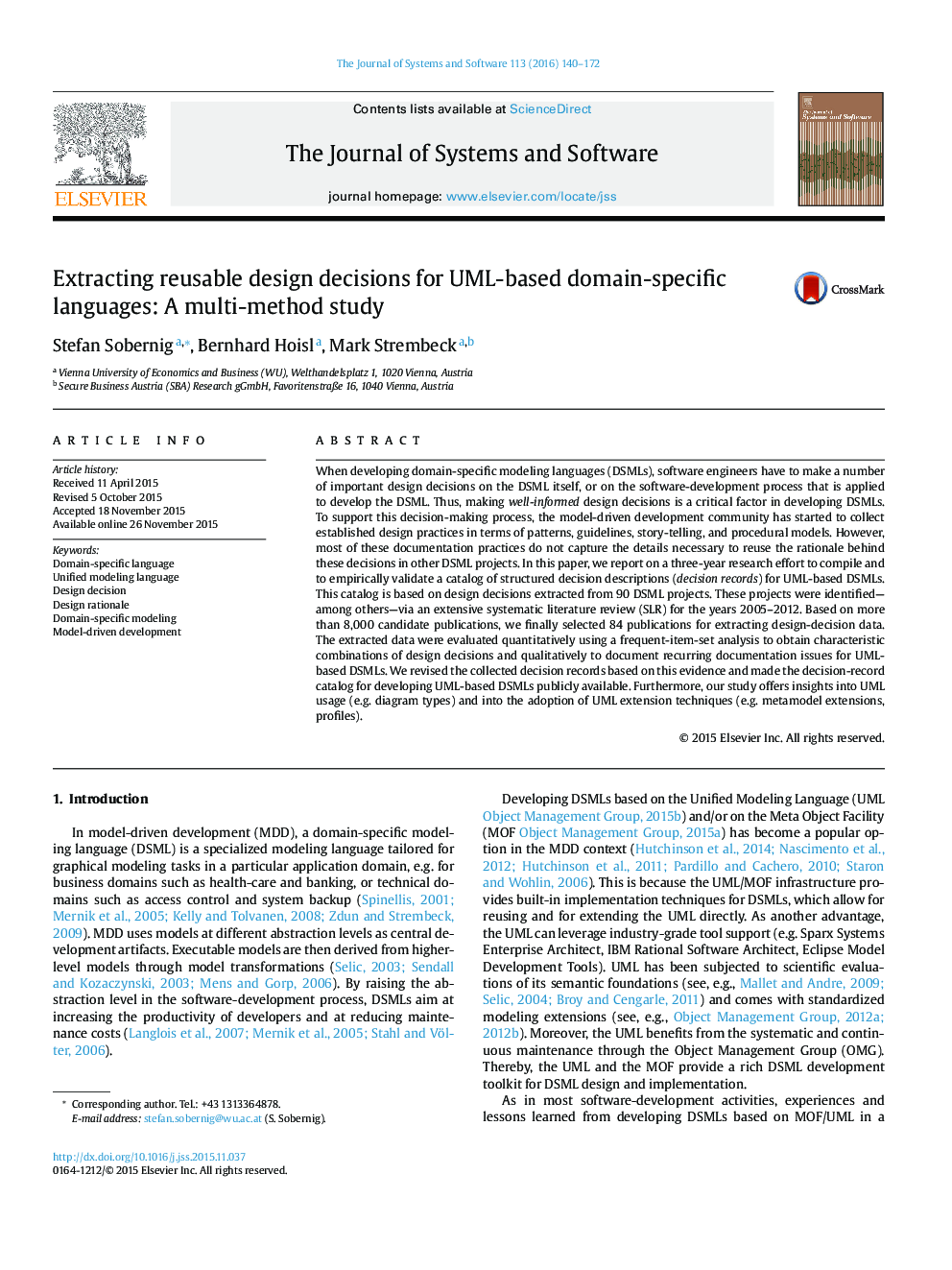| Article ID | Journal | Published Year | Pages | File Type |
|---|---|---|---|---|
| 459244 | Journal of Systems and Software | 2016 | 33 Pages |
•We conducted an extensive systematic literature review (SLR) based on 8,000+ publications for 2005–2012.•We examined 90 UML-based domain-specific languages (DSLs) for their design decisions.•We extracted 27 reusable design decisions and 7 characteristic DSL designs into a publicly available design-decision catalog.•One third of the documented design decisions can be combined to characterize more than 60% of the reviewed DSLs.
When developing domain-specific modeling languages (DSMLs), software engineers have to make a number of important design decisions on the DSML itself, or on the software-development process that is applied to develop the DSML. Thus, making well-informed design decisions is a critical factor in developing DSMLs. To support this decision-making process, the model-driven development community has started to collect established design practices in terms of patterns, guidelines, story-telling, and procedural models. However, most of these documentation practices do not capture the details necessary to reuse the rationale behind these decisions in other DSML projects. In this paper, we report on a three-year research effort to compile and to empirically validate a catalog of structured decision descriptions (decision records) for UML-based DSMLs. This catalog is based on design decisions extracted from 90 DSML projects. These projects were identified—among others—via an extensive systematic literature review (SLR) for the years 2005–2012. Based on more than 8,000 candidate publications, we finally selected 84 publications for extracting design-decision data. The extracted data were evaluated quantitatively using a frequent-item-set analysis to obtain characteristic combinations of design decisions and qualitatively to document recurring documentation issues for UML-based DSMLs. We revised the collected decision records based on this evidence and made the decision-record catalog for developing UML-based DSMLs publicly available. Furthermore, our study offers insights into UML usage (e.g. diagram types) and into the adoption of UML extension techniques (e.g. metamodel extensions, profiles).
